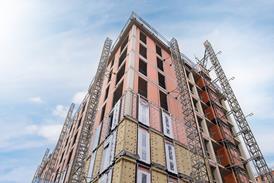The government’s plans for building up to 1.1m homes in the South-east by 2016 could be undermined by Conservative election victories in the four housing growth areas.
Conservative candidates unseated incumbent Labour MPs in each of the four growth areas – the Thames Gateway, Ashford, the M11 corridor and the South Midlands (see “Growth area votes”).
The Tories won seats in Kettering, Milton Keynes North East, Northampton South, Bedfordshire Mid and Peterborough. In the South Midlands and M11 corridor the average swing from Labour to Conservative was 5%.
The biggest scalp was that of junior Home Office minister Chris Pond, the former housing benefit minister, in Gravesham in the Thames Gateway.
Caroline Spelman, the shadow secretary for local government, said that housing was one of the key issues the party had identified as a vote winner. “Many people are deeply concerned about Prescott’s plans to concrete over our green belt and green fields, and this was reflected in the way people voted. There will be a stronger opposition to hold Blair and Labour to account.”
Housing experts agreed that, although MPs would have limited influence on planning decisions made at local authority level, the fact that voters had ousted Labour MPs was symptomatic of objections to mass housebuilding plans.
Sarah Webb, policy director at the Chartered Institute of Housing, said: “In quite a few places – like Kettering and Peterborough – the nimby vote came out and beat Labour.”
John Prescott's housebuilding targets had already been slowed down by the two Tory-dominated regional assemblies in the South- east, the South East Regional Assembly (SEERA) and the East of England Regional Assembly (EERA). SEERA has refused to consult on Prescott's preferred housing rate of 36,000 a year, while EERA has rejected its targets out of hand.
























No comments yet